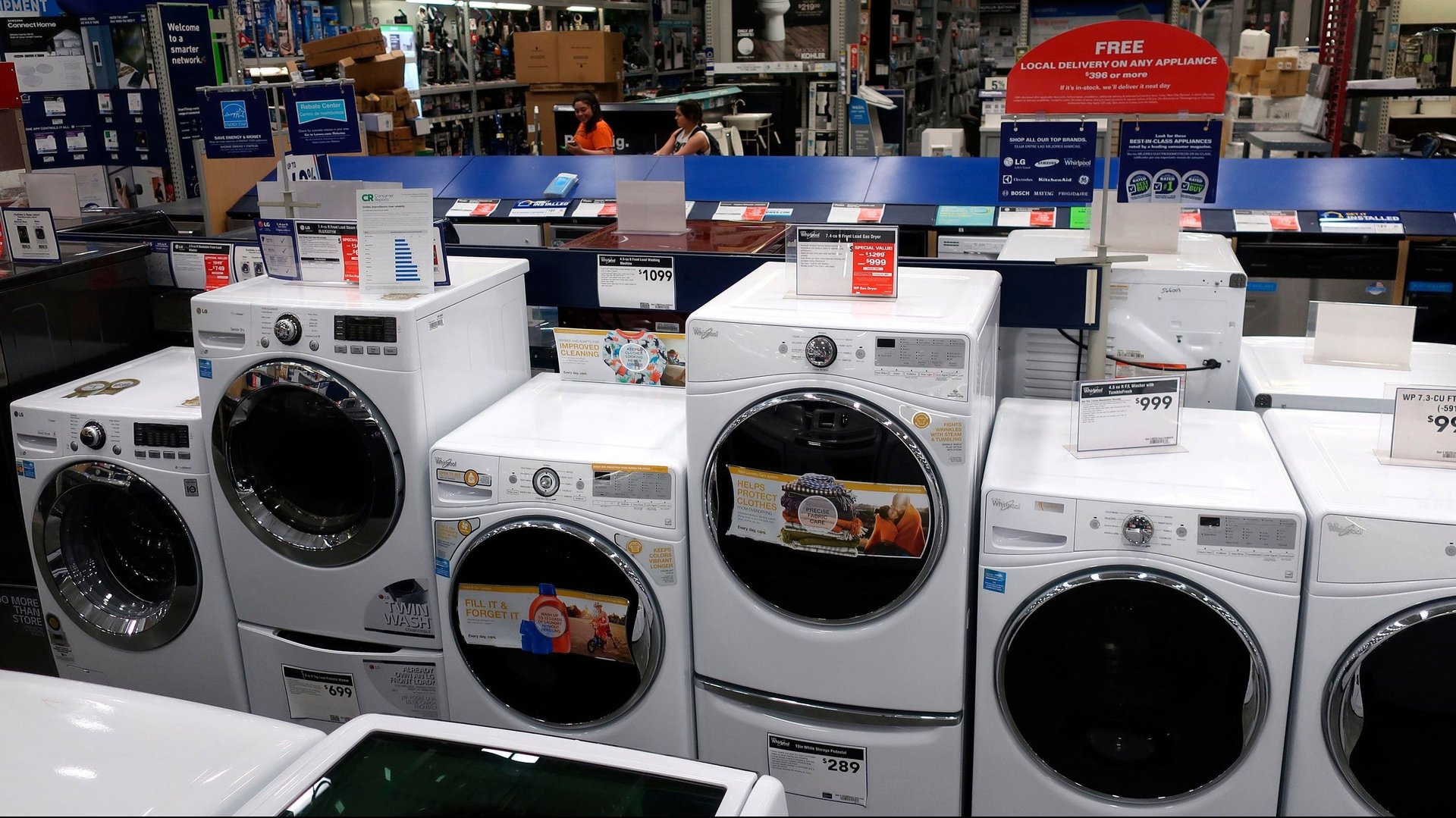Trump’s trade war has cost the US at least $19 billion
Economists warned Donald Trump that American consumers and firms would end up paying for his trade war with China and others. Now a new paper by three economists has put a price tag on it: $19.2 billion and counting.


Economists warned Donald Trump that American consumers and firms would end up paying for his trade war with China and others. Now a new paper by three economists has put a price tag on it: $19.2 billion and counting.
Since the beginning of 2018, the Trump administration has imposed tariffs on $283 billion worth of imported goods, including steel, washing machines, and solar panels. Prices went up, as expected, disrupting supply chains and budgets, according to the discussion paper, published by the London-based Centre for Economic Policy Research (CEPR.)
The study’s results are preliminary, but the evidence so far suggests that Trump’s protectionism is not paying off. Here’s what the authors—Mary Amiti, assistant vice president of New York’s Federal Reserve Bank, Princeton professor Stephen Redding, and Columbia professor and David Weinstein—found happened in the first 11 months of 2018:
Prices rose
The authors found that prices for the affected goods responded quickly to the tariffs, increasing between 10% and 30%. The jump closely matches the tariff levels, which suggests that buyers—American consumers and importers—absorbed the increase, not the foreign sellers of those goods.
Meanwhile, US companies marked up prices for their own goods, given the higher prices for their foreign competitors’ products.
Imports dropped, variety shrunk
As prices climbed, demand for the taxed products fell—as indicated by a 25% to 30% decline in the total value of imported goods, the paper shows. The variety in the types of things imported to the US also dropped, meaning American firms and consumers had less choice.
What’s the cost?
The researchers calculate Americans have so far paid $12.3 billion to the US government in tariffs, and lost $6.9 billion in income due to trade-war-related market disruptions.
And it’s not just imports that the tariffs have upended. The US’s trading partners have responded with tariffs of their own, which are hitting American exporters. So far, tariffs have diverted $2.4 billions’ worth of US exports, and $11.4 billion in imports a month, according to the study. That’s the equivalent of $165 billion a year. If the tariffs stay in place, firms will likely have to rethink their supply chains, they say.
Tariff-related uncertainty is also hurting business. The study doesn’t attempt to calculate its effects, but its authors say the losses are likely “considerable.”
Is the US winning anything?
So far, the tariff revenue the US is collecting is not enough to cover the losses to consumers and companies, the study suggests. And even if the trade war accomplished Trump’s goals of pressuring China to pay more royalties for US intellectual property and boosting manufacturing jobs, it would be expensive.
For example, if China increased royalty payments by 25%—a big boost—it would still take three years to cover the costs of trade disruptions, the authors calculate. And assuming the US were able to recover the 35,000-odd steel and aluminum jobs it lost over the past decade, they would come at $195,000 a piece—about four times the annual steel worker salary.
“These benchmarks suggest that the costs of the trade war are quite large relative to optimistic estimates of any gains that are likely to be achieved,” the authors conclude.